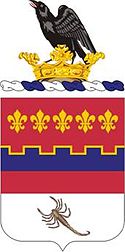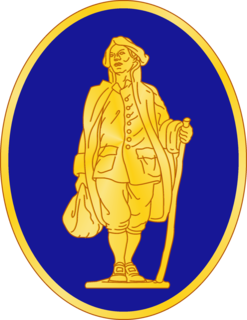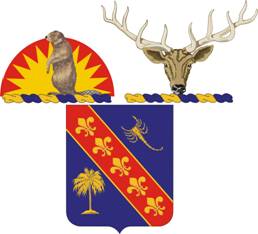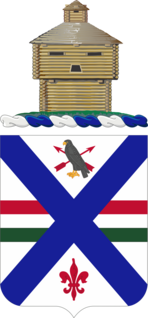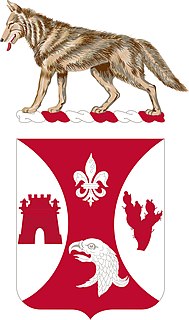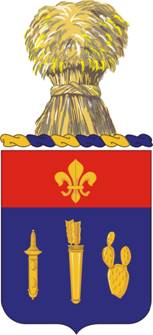Lineage
Organized 9 March 1886 and 7 April 1887 from existing companies in the Washington Territorial Militia as the 1st (west of the Cascade Mountains) and 2d (east of the Cascade Mountains) Regiments of Infantry
(Washington Territorial Militia redesignated 28 January 1888 as the Washington National Guard)
2d Infantry Regiment reorganized and redesignated 23 July 1895 as the 1st Infantry Battalion
1st Infantry Regiment reorganized and redesignated in 1897 as the 2d Infantry Battalion
Ten companies of the 1st and 2d Infantry Battalions mustered into federal service 6–13 May 1898 at Tacoma as elements of the 1st Regiment, Washington Volunteer Infantry and mustered out of federal service 1 November 1899 at San Francisco, California; two companies of the 1st and 2d Infantry Battalions mustered into federal service 2–15 July 1898 at Tacoma as elements of the Independent Battalion, Washington Volunteer Infantry, and mustered out of federal service 28 October 1898 at Vancouver Barracks, Washington
Elements of the former 1st and 2d Infantry Battalions consolidated 9 November 1899 with the 1st and 2d Infantry Regiments (organized in 1898 in the Washington National Guard) and consolidated unit reorganized and designated as the 1st Infantry Regiment
Redesignated 15 May 1903 as the 2d Infantry Regiment
Mustered into federal service 28 June 1916 at Camp Elmer M. Brown, Washington; mustered out of federal service 8 October 1916 at American Lake
Drafted into federal service 5 August 1917
Consolidated 19 September – 20 October 1917 with elements of the 3rd Infantry Regiment (District of Columbia National Guard) to form the 161st Infantry, and assigned to the 41st Infantry Division (United States)
Demobilized 1–8 March 1919 at Camp Dix, New Jersey, and Camp Dodge, Iowa
Former 2d Infantry Regiment reorganized 1 January 1921 in the Washington National Guard as the 161st Infantry Regiment (United States), with headquarters at Spokane, and assigned to the 41st Division
1st Battalion and Headquarters and Supply Company, 161st Infantry, consolidated 10 May 1921 with the former Washington National Guard field artillery battalion (see ANNEX) to form the 146th Field Artillery, with headquarters at Seattle, and assigned to the 41st Division (remainder of 161st Infantry – hereafter separate lineage)
146th Field Artillery inducted into federal service 16 September 1940 at home stations
Regiment broken up 17 February 1942 and its elements reorganized and redesignated as follows:
Headquarters disbanded
1st and 2d Battalions as the 146th and 167th Field Artillery Battalions, elements of the 41st Infantry Division
(Headquarters Battery as Headquarters and Service Company, 133d Engineers; Band as the Band, 41st Division Artillery – hereafter separate lineages)
After 17 February 1942 the above units underwent changes as follows:
Headquarters, 146th Field Artillery, reconstituted 25 August 1945 in the Washington National Guard Reorganized and federally recognized 9 March 1948 at Seattle as Headquarters, 66th Field Artillery Group Ordered into active federal service 11 September 1950 at Seattle; released from active federal service 10 July 1952 and reverted to state control; federal recognition withdrawn 1 August 1952
146th Field Artillery Battalion inactivated 31 December 1945 in Japan Reorganized and federally recognized 13 May 1947 with headquarters at Seattle
167th Field Artillery Battalion inactivated 31 December 1945 in Japan Reorganized and federally recognized 9 July 1947 at Vancouver
Headquarters, 66th Field Artillery Group, and the 146th and 167th Field Artillery Battalions consolidated, reorganized, and redesignated 15 April 1959 as the 146th Artillery, a parent regiment under the Combat Arms Regimental System, to consist of the 1st Howitzer Battalion and 2d Rocket Howitzer Battalion, elements of the 41st Infantry Division
Reorganized 1 March 1963 to consist of the 1st and 2d Battalions
Reorganized 1 January 1968 to consist of the 2d Battalion, an element of the 81st Infantry Brigade
Withdrawn 1 June 1989 from the Combat Arms Regimental System and reorganized under the United States Army Regimental System with headquarters at Olympia
Redesignated 16 October 2005 as the 146th Field Artillery Regiment
Ordered into active federal service 15 November 2003 at home stations; released from active federal service 12 May 2005 and reverted to state control (81st Infantry Brigade reorganized 1 September 2005 as the 81st Armored Brigade Combat Team)
Transitioned from self-propelled howitzer battalion (Paladins) to a towed howitzer battalion (m777)
Annex
Constituted in 1914 in the Washington National Guard as a field artillery battalion Assigned 18 July 1917 to the 41st Division
Battery A organized and drafted into federal service 5 August 1917; remainder of battalion organized 25 September 1917 while in federal service at Camp Greene, North Carolina, from personnel recruited for the Washington National Guard field artillery
Consolidated 19 September 1917 with Headquarters Company, Supply Company, and 1st Battalion, 2d Infantry (Idaho National Guard), and Battery A, Field Artillery (New Mexico National Guard), to form the 146th Field Artillery and assigned to the 41st Division
Demobilized 26 June 1919 at Fort D.A. Russell, Wyoming
